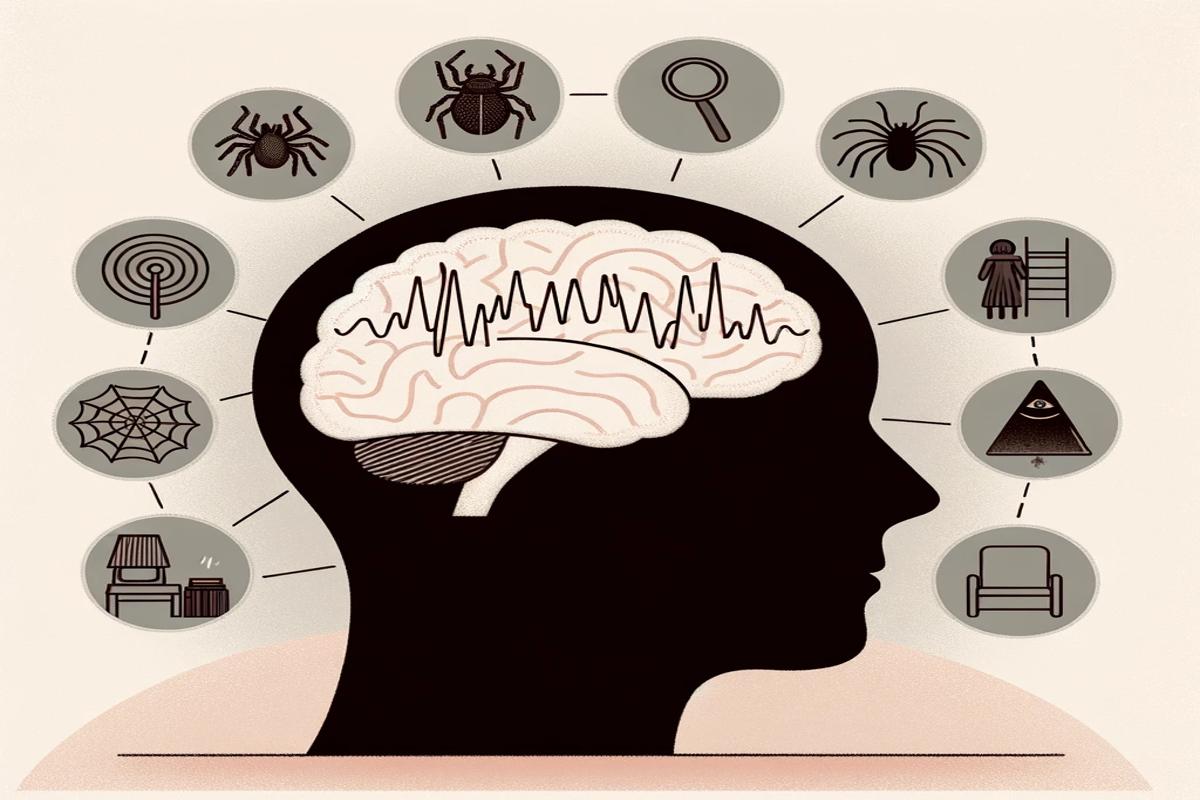What We Know About Brainwaves & Phobias
There is still plenty science has yet to uncover about the human brain. However, in the current year where pandemics, war and food shortages are occurring almost simultaneously, human anxiety, fear and stress is at a high point around the world.
Healthy Minded, a fear about accessibility and the power of the brain, explains very well how brain activity and hormone imbalances can contribute to our fear response and the possibility of developing phobias. In this blog, we go over fear and phobias from a neurophysiological perspective — with particular emphasis on brain waves and their role in producing stress hormones or the manifestation of physical symptoms of fear.
The Existing Science Around Brainwaves
Table of Contents
Brainwaves are electrical signals that originate in the brain. These signals can be recorded using electrodes placed on the scalp, which can provide valuable information about brain activity. Brainwaves can be divided into five main categories:
- Alpha waves are the most common type of brain wave and are typically produced when a person is awake, but not actively engaged in mental activity.
- Beta waves are associated with more active mental activity, and are often produced during times of stress or anxiety.
- Gamma waves are associated with higher levels of brain activity, and they are often seen in people who are experiencing intense emotions or engaged in deep concentration.
- Delta waves are the least common type of brainwave and are typically most active during periods of deep sleep or REM sleep.
- Theta waves are associated with meditation, finding your way around an unknown environment, and learning new things.
A growing body of research suggests that different types of brainwaves can be associated with different states of consciousness. For example, alpha waves are often seen in people who are in a state of relaxation, while beta waves are more commonly seen in people who are experiencing stress or anxiety. Gamma waves, on the other hand, have been linked to states of deep concentration and focus.
While brainwaves can provide valuable information about a person’s state of mind, it’s important to remember that they are only one piece of the puzzle. Other factors, such as heart rate or breathing, can also influence a person’s state of consciousness when in fear.
Understanding Fear
Fear is associated with a marked increase of beta and gamma waves in the brain. When we feel afraid, our brains release stress hormones that prepare us to flee or fight. This “fight-or-flight” response is a survival mechanism that’s evolved to help us protect ourselves from harm. When a person is afraid, they often also manifest physical symptoms, such as an increase in heart rate, perspiration or even vomiting.

Fear can certainly be a useful emotion, but it can also become problematic when it’s out of proportion to the actual danger we face. While it’s a natural reaction that helps us avoid danger, some people may experience fear even when there’s no real danger present. This can be a symptom of an anxiety disorder.
Fear As It Relates to Phobias
There are many different types of phobias, but they all share one common symptom: intense fear or anxiety in response to a specific trigger setting or event. This trigger could be anything from heights to snakes or even closed spaces. People with phobias often go to great lengths to avoid their triggers, and the fear can have a major impact on their quality of life.
There are two main types of phobias: specific phobias and social phobias. Specific phobias are intense fears of specific triggers, such as heights, snakes, or small spaces, while a social phobia is a fear of social situations, such as public speaking or meeting new people.
Most phobias develop in childhood or adolescence, but they can also develop in adulthood. Phobias are often treated with exposure therapy, which involves gradually exposing the person to their triggers in a safe and controlled environment. With treatment, medication, and supplementary use of clinically tested and proven technologies (e.g. pulsed electromagnetic field therapy), even most people with phobias can learn to manage their fear and live normal, productive lives.
References
Roohi-Azizi M, Azimi L, Heysieattalab S, Aamidfar M. (2017). “Changes of the brain’s bioelectrical activity in cognition, consciousness, and some mental disorders”. Med J Islam Repub Iran
Karalis, N., Dejean, C., Chaudun, F. (2016). “4-Hz oscillations synchronize prefrontal–amygdala circuits during fear behavior”. Nat Neurosci 19, 605–612
Disclaimer
NeoRhythm has not been evaluated by the FDA. These products do not claim to diagnose, treat, cure, or prevent any medical conditions. Always consult your medical doctor regarding any health concerns.
